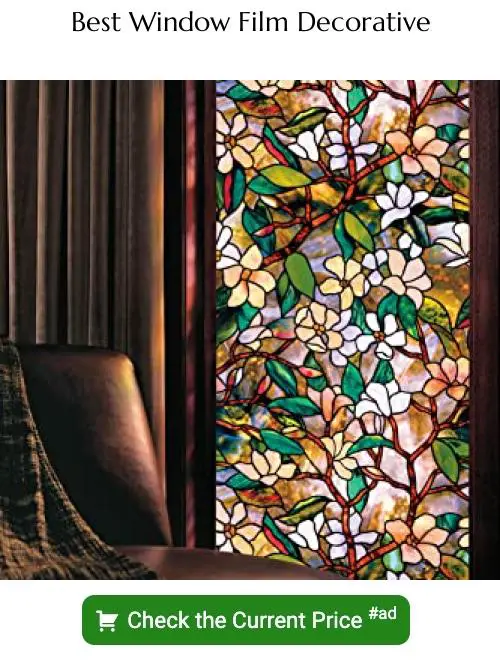Discover creative ways to dress up your windows without curtains, transforming the look of any room with these simple yet stunning solutions.
Windows are an essential part of any home, as they bring in natural light and offer a view of the outside world. However, dressing them up can be a challenge, especially if you’re not a fan of curtains.
Fortunately, there are plenty of other ways to add some style and privacy to your windows without resorting to traditional drapery. In this blog post, we’ll explore some creative alternatives that will help you dress up your windows in no time! So whether you’re looking for something minimalist or something bold and colorful, read on for some inspiration on how to dress a window without curtains.
Key takeaways:
- Window film: Add privacy and texture with frosted or patterned film.
- Frosted glass window film: Provides elegance, privacy, and glare reduction.
- Pebble pattern window film: Creates visual interest without distraction.
- Stained glass effect: Use faux stained glass film or colored translucent panels.
- Faux leaded glass: Achieve the look of leaded glass without the cost.
- Roman shades: Neat and versatile fabric shades for light control.
- Tie-up shades: Versatile, affordable, and available in various styles.
- Roller shades: Block out sunlight and provide privacy with customizable options.
- Bamboo blinds: Sustainable, affordable, and add warmth to any room.
- Blinds and shutters: Provide privacy, light control, and style options.
- Plantation blinds: Provide privacy and elegance with wide slats.
- Vertical blinds: Versatile and modern-looking, great for large windows.
- Shutters: Offer insulation and style; choose from different materials and designs.
- Window boxes: Add color and fragrance to your windowsill.
- Window shelves: Display plants or decorative items above your window.
- Hanging plants: Decorative and purify the air, perfect for small spaces.
- Herb garden: Grow fresh herbs in small pots on your windowsill.
- Hanging garden: Save space by hanging plants from your window frame.
- Valances: Add elegance and creativity with fabric or wood designs.
- Stenciled sign: Add a personal touch with stencils and paint.
- Paint window frame: Choose a bold color to match your decor style.
- Twinkling string lights: Create a cozy and magical atmosphere.
- Macrame: Knot cords together to create unique window hangings.
- Framed art: Showcase your favorite artwork with decorative frames.
- Privacy screens: Offer privacy while still allowing natural light.
- Lace window screens: Add a vintage or bohemian vibe to your windows.
- Creative DIY alternatives: Macrame, hanging gardens, painted window frames, and more.
- Additional options: Use textured sheets, window texture films, and hanging foliage.
- FAQs: Answers to common questions about window treatments and alternatives.
Window Film
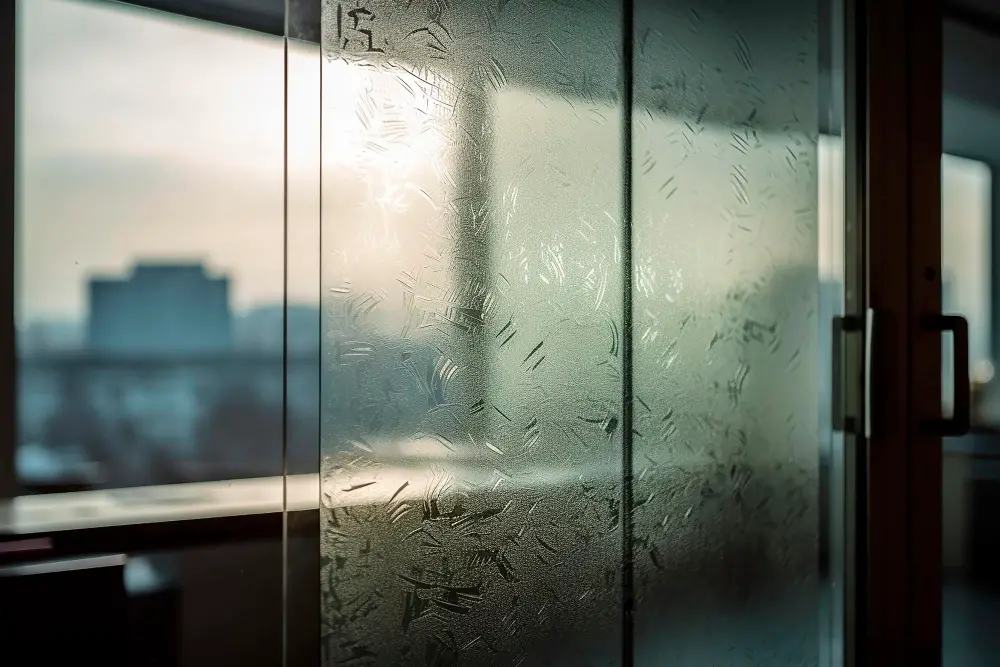
This adhesive material comes in a variety of patterns, colors, and textures that can add privacy while still allowing natural light to filter through. Frosted glass window film is a popular choice for bathrooms or bedrooms where you want more privacy but don’t want to sacrifice sunlight.
Pebble patterned films are perfect for adding texture and visual interest to any room without being too distracting.
Installing window film is also incredibly easy – all you need are some basic tools like a squeegee, spray bottle filled with soapy water, and a sharp utility knife. Simply measure the size of your windows accurately before cutting out the appropriate size from the roll of film.
Once cut out correctly, spray some soapy water on both sides (the sticky side as well) before applying it onto your clean dry glass surface; this will allow you time to adjust its position until it’s perfectly aligned with no air bubbles trapped underneath.
Frosted Glass Window Film
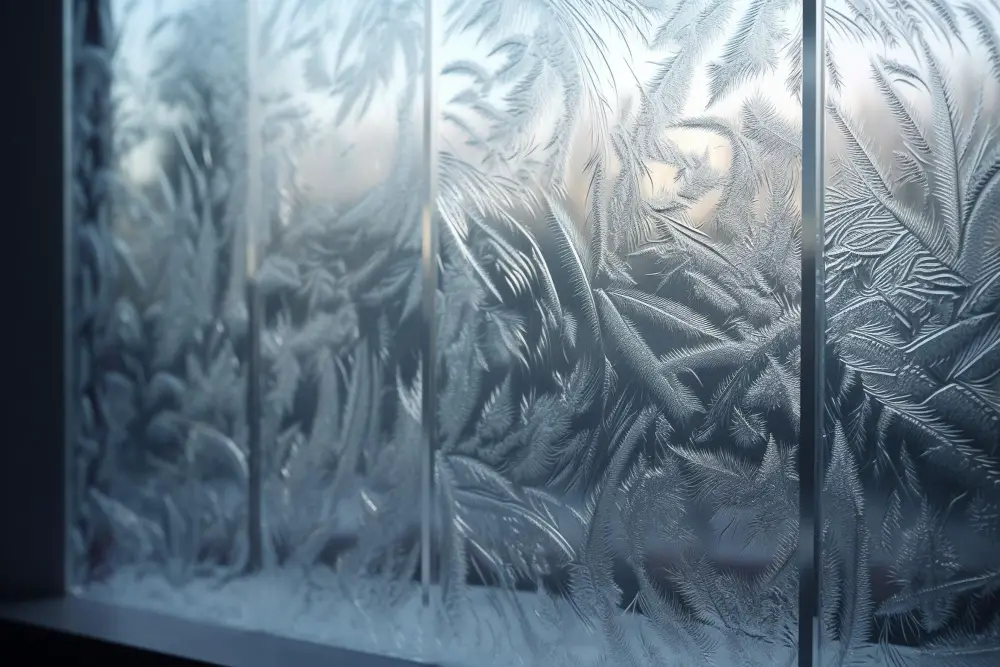
This type of film can be applied directly onto the glass surface and comes in various patterns and designs, including geometric shapes or floral motifs. Frosted glass window film is also easy to install and remove without leaving any residue behind.
One of the benefits of using frosted glass window film is that it provides an elegant look that complements any decor style. It’s perfect for bathrooms or bedrooms where you want some privacy but don’t want to block out all the light.
This type of window treatment can help reduce glare from direct sunlight while still allowing plenty of natural light into your space.
Another advantage is its affordability compared with other types of treatments like blinds or shutters which may require professional installation services adding up costs significantly higher than those associated with DIY application methods for frosted films.
Pebble Pattern Window Film
This type of film features a unique pattern that resembles small pebbles or stones, creating an interesting visual effect when the light shines through it. It’s perfect for bathrooms or other areas where you want some privacy but still need natural light.
One of the benefits of Pebble Pattern Window Film is that it’s easy to install yourself, making it an affordable alternative to traditional window treatments. Simply measure your window and cut the film accordingly, then apply it using soapy water and a squeegee.
Another advantage is its versatility in terms of design options; there are many different colors available from clear frosted glass lookalike films with subtle patterns all the way up bold colored designs with more pronounced textures.
Stained Glass Effect
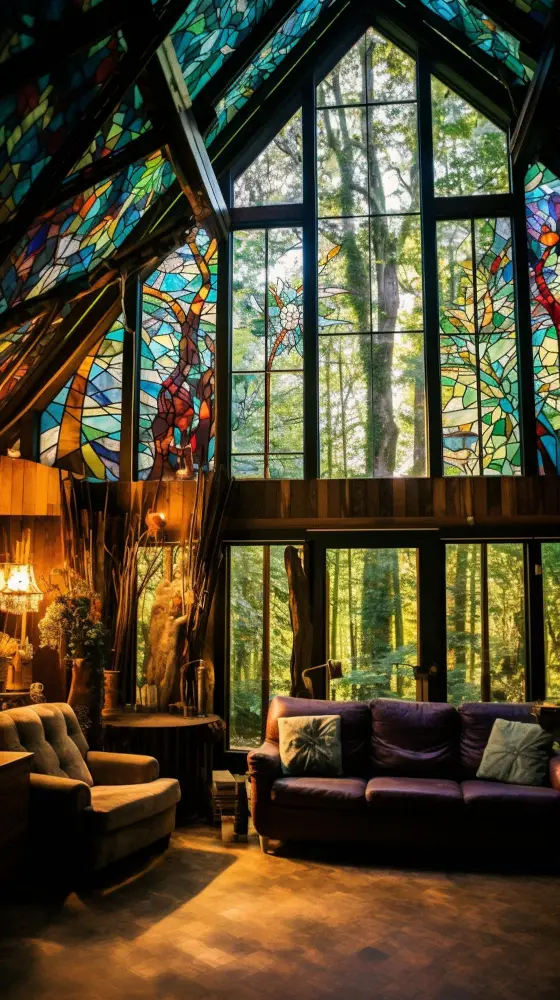
One option is using a faux stained glass film that can be easily applied and removed from your windows. These films come in various designs and colors, allowing you to choose one that complements your decor style.
You can also create your own faux stained glass by painting directly onto clear contact paper or using tissue paper cutouts on waxed paper with glue for an easy DIY project.
Another way of achieving this effect is by installing colored translucent panels over existing windows or doors. This method allows natural light into space while adding color and texture at the same time.
Faux Stained Glass
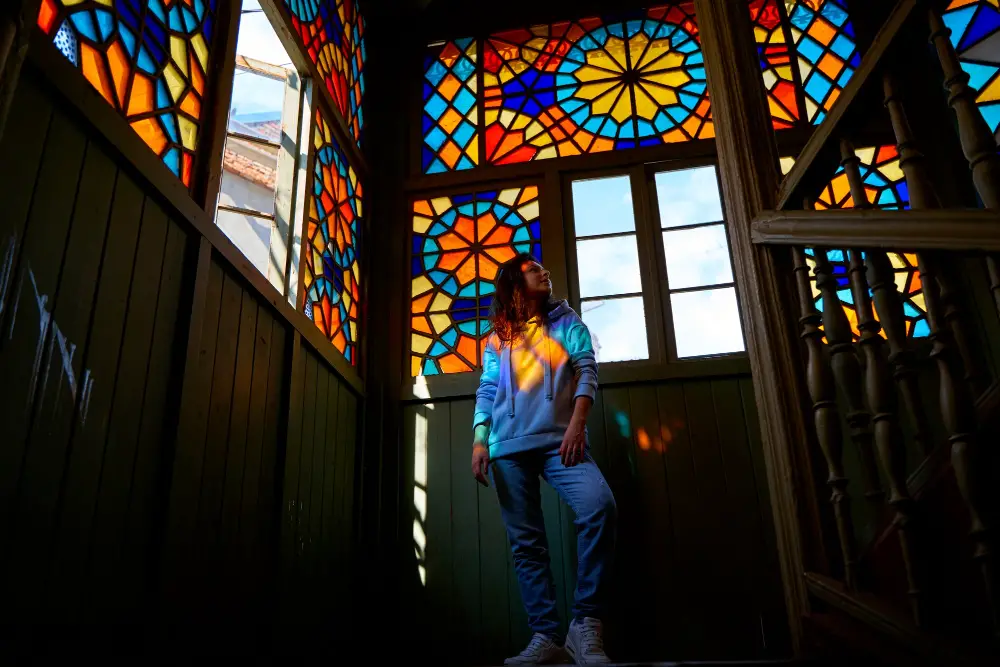
This option allows you to create beautiful designs on your windows without having to replace them entirely. Faux stained glass can be created using various materials such as acrylic paint, glue gun and food coloring or tissue paper.
One way of creating faux-stained-glass is by using liquid leading that comes in a tube-like form and applying it directly onto the windowpane in any design that suits your taste. Once dry, fill in each section with different colors of transparent paint or even colored cellophane for added texture.
Another method involves cutting out shapes from colored tissue paper and gluing them onto clear contact paper before sticking it onto the windowpane. The result will be a colorful mosaic effect that looks like real stained glass when viewed from outside.
Faux Leaded Glass
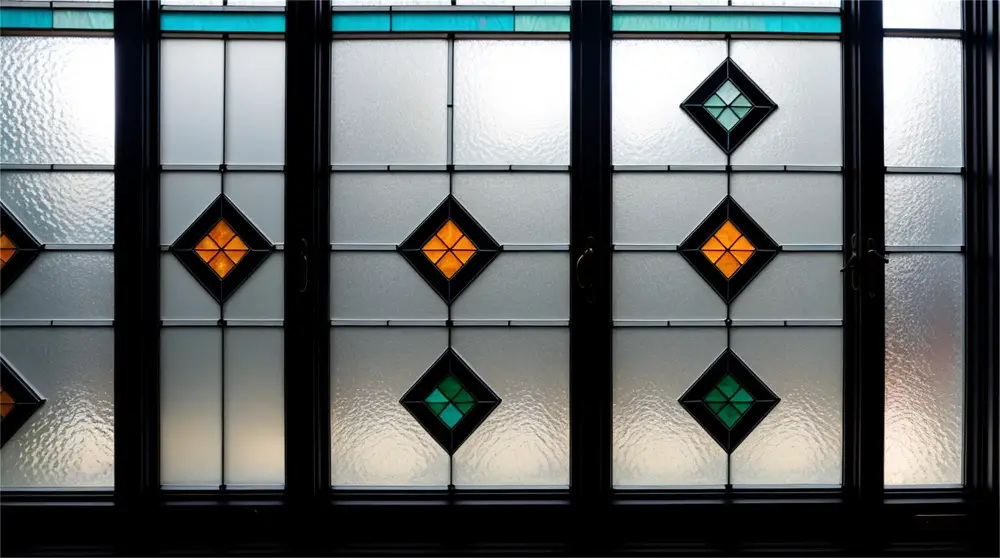
With faux leaded glass, you can achieve the same look without breaking the bank or hiring a professional. This type of window film comes in various designs and patterns that mimic real leaded glass windows.
One of the benefits of using faux leaded glass is that it provides privacy while still allowing natural light into your home. It’s perfect for bathrooms or bedrooms where you want some seclusion but don’t want to block out all sunlight.
Another advantage is its ease of installation; anyone can apply this film with just a few simple tools like scissors, spray bottle filled with soapy water, squeegee and utility knife.
Roman Shades
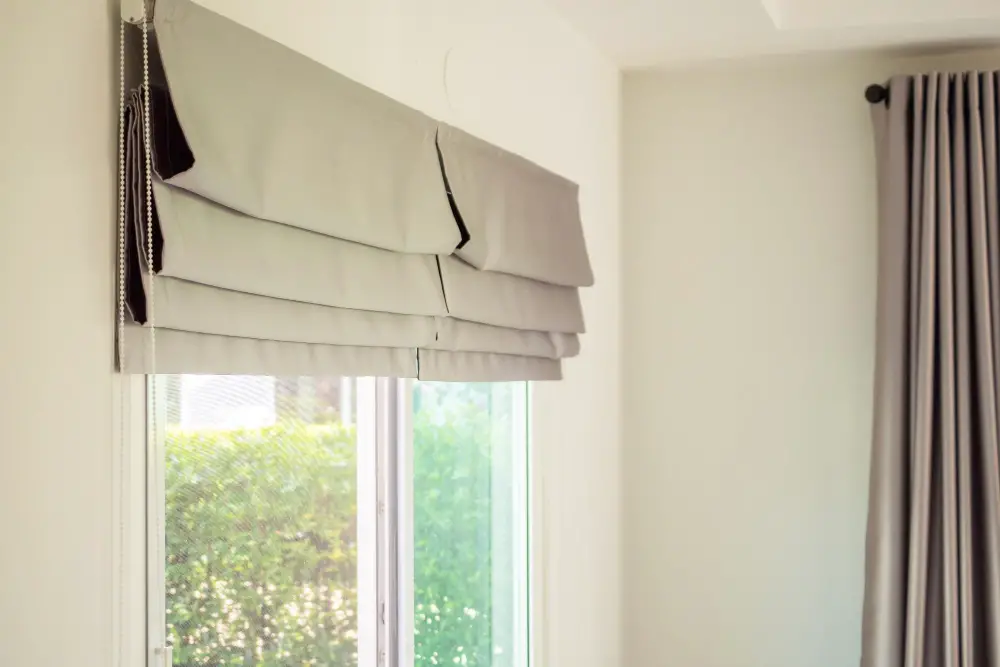
These shades are made of fabric and come in a variety of colors, patterns, and textures. They work by folding up neatly when raised, creating a clean look that doesn’t obstruct the view outside.
One great thing about Roman Shades is their versatility – they can be used alone or paired with other window treatments like valances or curtains for added style. Plus, they’re easy to install and operate with just one pull cord.
Tie-up Shades
These shades come in a variety of styles and colors, making it easy to find one that matches your decor. They work by tying up the bottom of the shade with ribbons or cords, allowing you to adjust the amount of light coming into your room.
One advantage of tie-up shades is their versatility – they can be used in any room in your home. Whether you want them for privacy or just as an accent piece, these shades will add style and functionality without taking up too much space.
Another benefit is their affordability – tie-up shades are often less expensive than traditional curtains but still offer similar benefits such as light control and privacy.
Roller Shades
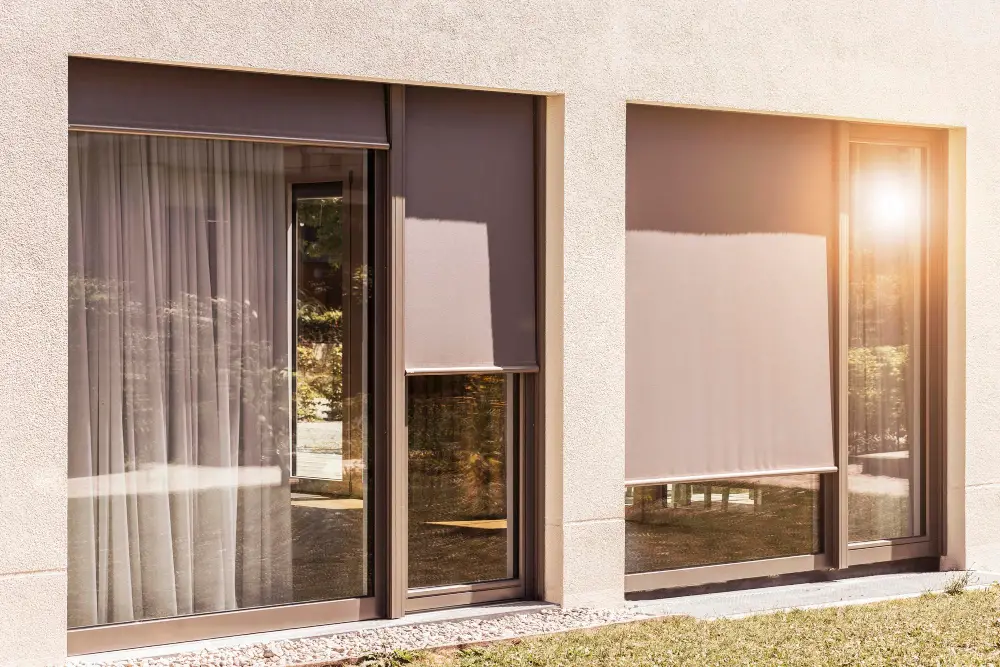
They come in a variety of colors and materials, including blackout options that can provide complete privacy when needed. Roller shades are easy to install and operate with just one pull cord or motorized remote control.
They also offer the added benefit of being able to block out sunlight completely, making them perfect for bedrooms or media rooms where light control is essential.
Roller shades can be customized to fit any window size or shape, making them versatile enough for any room in your home. You can choose from different fabrics such as linen, cotton blends or polyester which will give you varying degrees of opacity depending on how much light filtering you want.
Bamboo Blinds
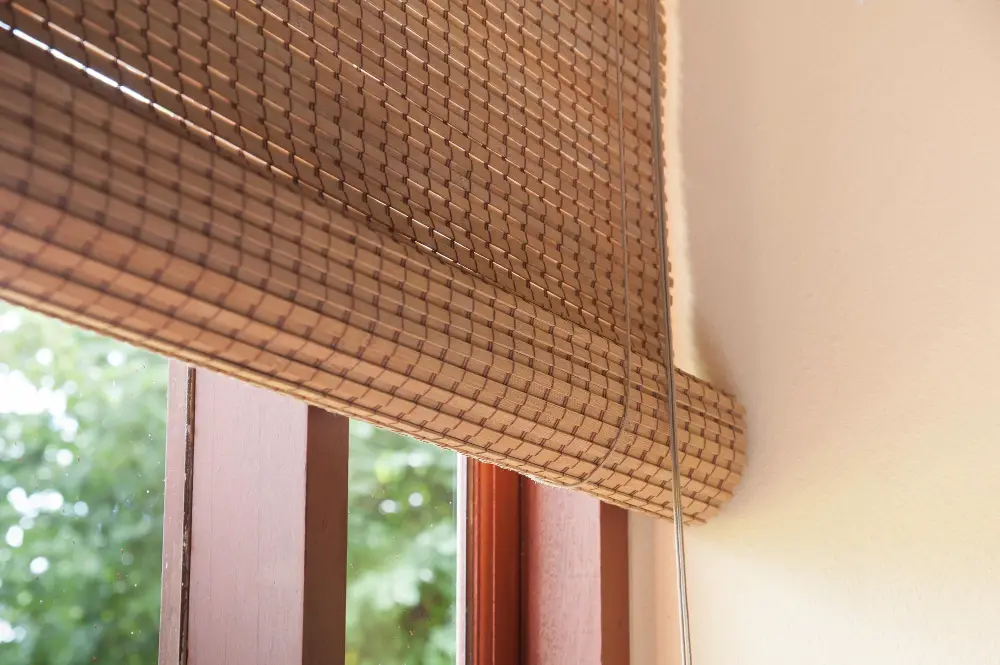
These blinds are made from sustainable materials and come in various styles that can complement any decor. They offer privacy while still allowing natural light to filter through, creating a warm and inviting atmosphere in any room.
Bamboo blinds come in different colors, patterns, and textures that can add depth to your window treatments. You can choose from roll-up or Roman-style shades depending on the level of privacy you need.
Bamboo is also easy to clean; all you need is a damp cloth or vacuum cleaner with brush attachment.
In addition to being environmentally friendly, bamboo blinds are also affordable compared with other types of window treatments like curtains or shutters. They provide an exotic touch without breaking the bank.
Blinds
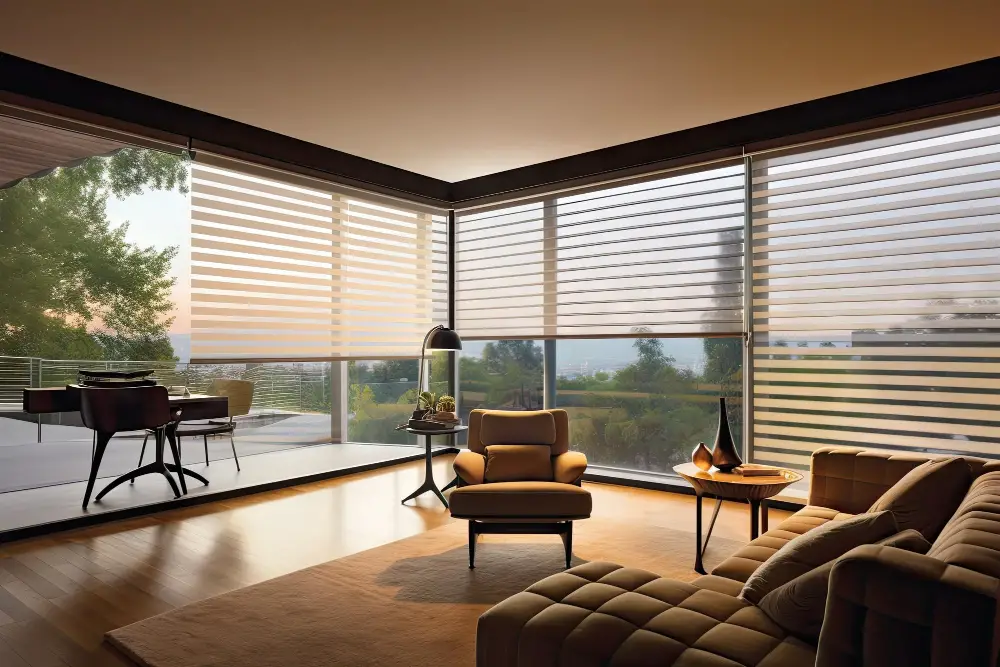
They offer privacy, light control, and can be easily adjusted to suit your needs. One of the most common types of blinds is the horizontal slat blind made from wood or faux wood.
These blinds are available in various colors that match any decor style.
Vertical blinds are another option for those who want something more modern-looking than traditional drapes but still need privacy control over large windows or sliding glass doors.
Plantation shutters have become increasingly popular as well because they provide an elegant look while also being functional at controlling light levels throughout the day.
Plantation Blinds
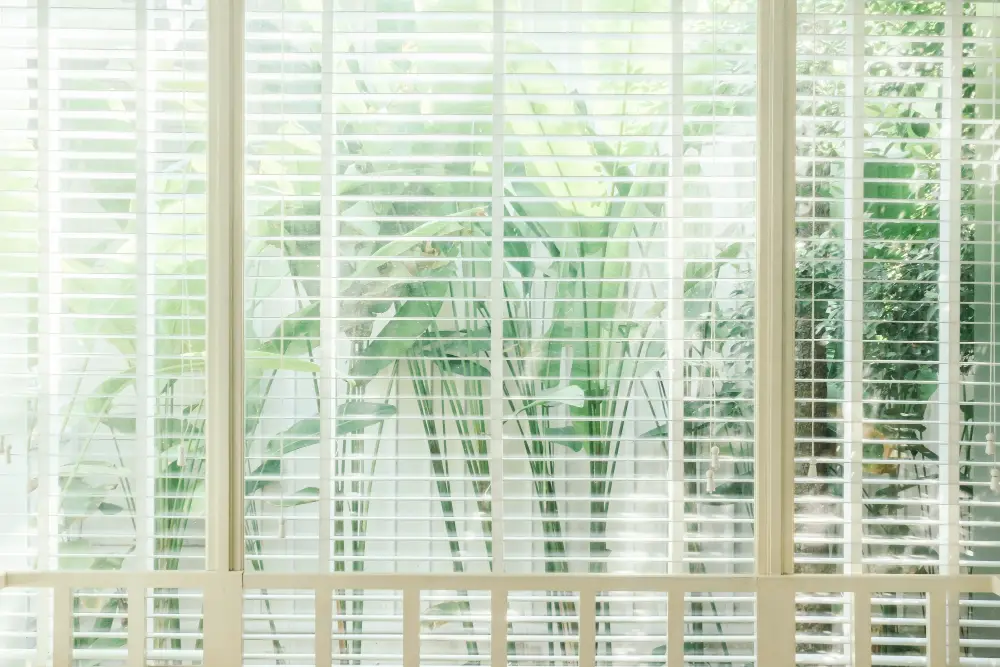
These blinds feature wide slats that can be adjusted to control the amount of light entering the room, making them perfect for bedrooms or living areas where privacy is important. Plantation blinds come in various materials such as wood, faux wood or vinyl and can be customized to fit any window size.
One of the benefits of plantation blinds is their durability; they are built to last for years with minimal maintenance required. They also offer excellent insulation properties which help keep your home cool during summer months and warm during winter months.
Another advantage of plantation shutters is their versatility when it comes to design options; you can choose from different colors, finishes and styles depending on your preference. Whether you’re looking for something traditional or contemporary, there’s sure to be an option that suits your taste.
Vertical Blinds
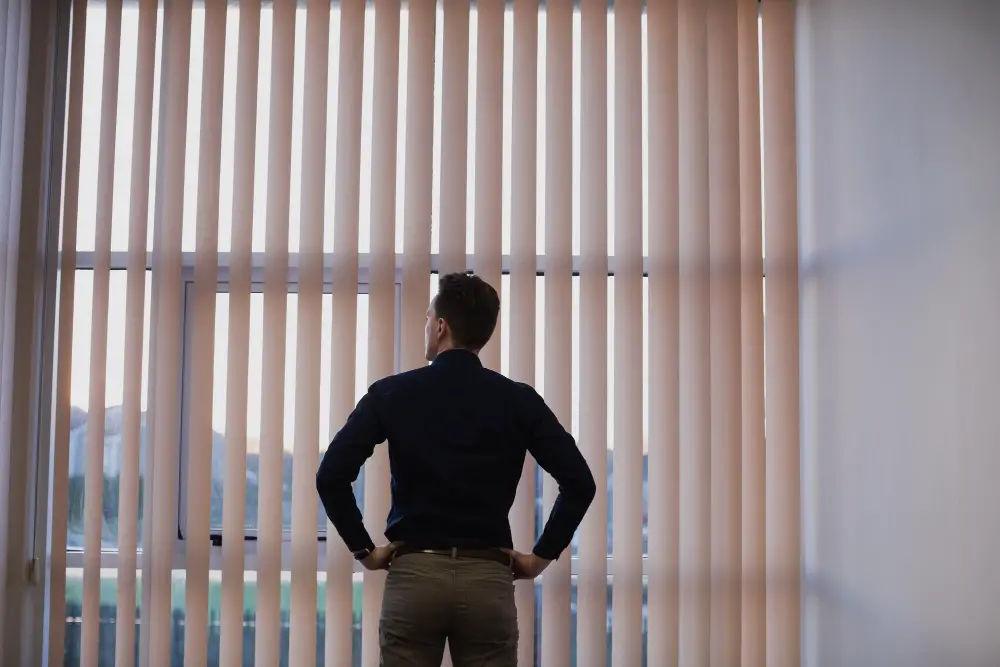
These classic window coverings are made up of long, narrow slats that hang vertically from a track at the top of your window frame. They can be adjusted to let in as much or as little light as you want, and they come in a variety of materials such as vinyl, fabric or wood.
One advantage of vertical blinds is their versatility – they work well on large windows or sliding glass doors where other treatments may not fit properly. Plus, with so many colors and patterns available these days (including some surprisingly stylish options), it’s easy to find something that complements your decor.
Another benefit is their ease-of-use: simply pull on the cord to adjust them open or closed. And if you have pets who like to peek out the windows during the day while you’re away at work? Vertical blinds can help keep them entertained without letting too much sunlight into your home.
Shutters
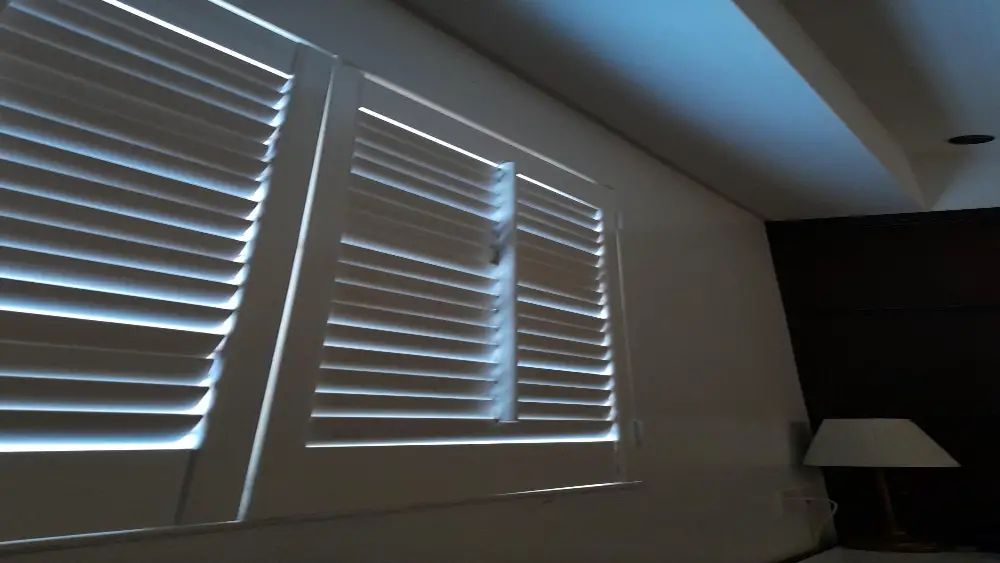
They come in a variety of materials, including wood, vinyl, and composite materials. Shutters offer excellent light control and privacy options while also adding an elegant touch to your windows.
Indoor shutters are perfect for those who want to create a cozy atmosphere in their home. They provide insulation against the cold during winter months while keeping out the heat during summer months.
Barn door shutters have become increasingly popular as they give off rustic vibes that work well with farmhouse-style decor.
Vintage-style shutters can be used as decorative accents on walls or even hung from ceilings for added visual interest. You could also paint them with bright colors or distress them for an antique look.
Indoor Shutters
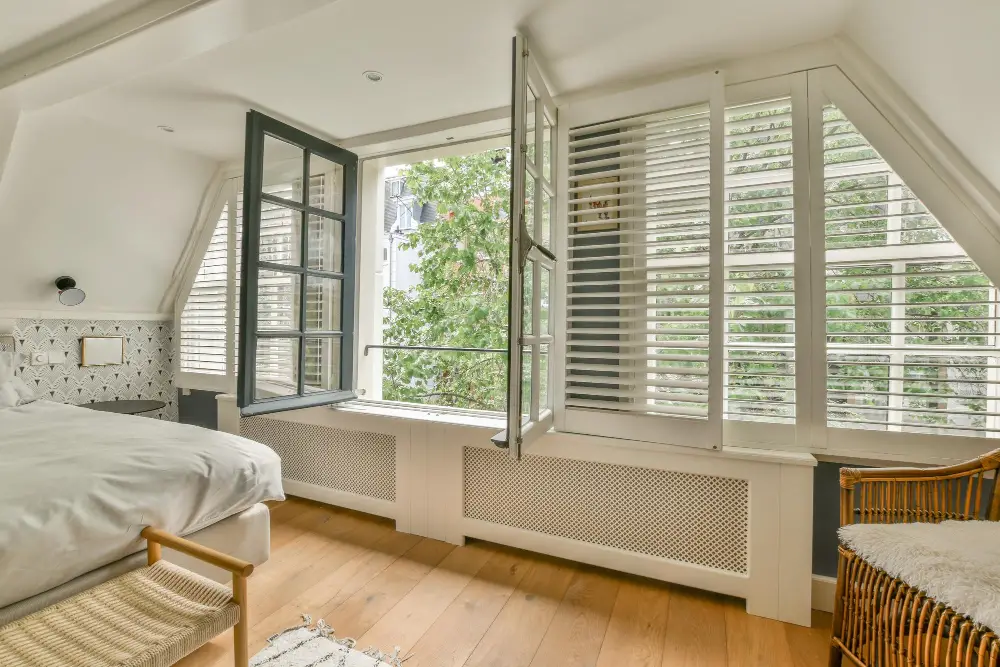
They offer privacy, light control, and insulation while adding a touch of elegance to any room. Indoor shutters come in various styles such as plantation or vintage-style shutters that can be customized according to the size of your window.
Plantation style indoor shutters have wide louvers that allow plenty of natural light into the room when opened fully. When closed completely they provide complete privacy from outside view while still allowing some natural light through their slats.
Vintage-style indoor shutter is another popular choice among homeowners who want something more traditional-looking than plantation style ones. These types of interior window treatments feature smaller louvers with decorative trim around them giving them an old-world charm.
Barn Door Shutters
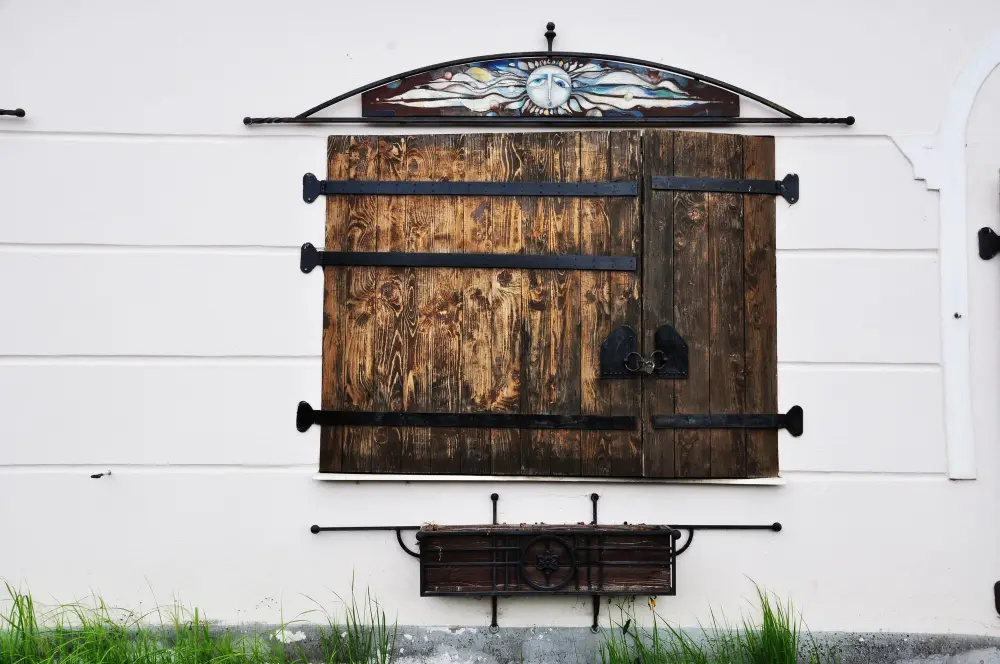
These shutters add a rustic charm to any room, making them perfect for country-style homes or those looking for something different. Barn door shutters come in various styles, including sliding barn doors that cover the entire window or half-doors that only cover the bottom portion of the window.
One of the benefits of using barn door shutters is their versatility. They can be used on any type of window, from small bathroom windows to large living room picture windows.
They offer excellent light control and privacy options since you can adjust them as needed.
Another advantage is their durability; these sturdy wooden shutters are built to last and require minimal maintenance compared with other types of window treatments like curtains or blinds.
Vintage-Style Shutters
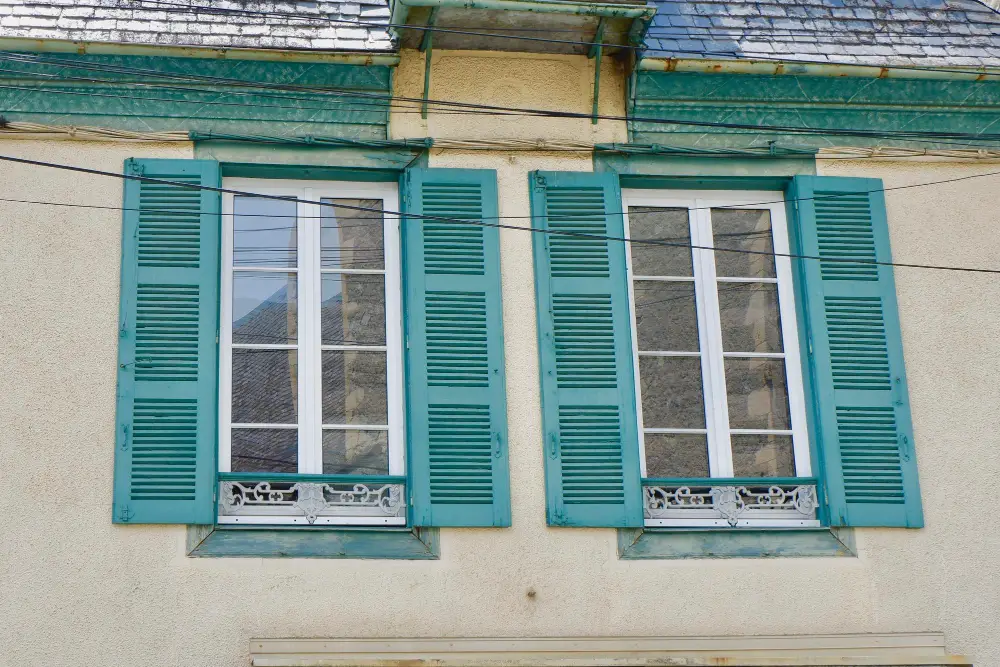
These shutters come in a variety of styles, from rustic barn doors to elegant French-inspired designs. They can be made from wood or metal and can be painted or stained in any color you like.
One of the benefits of vintage-style shutters is that they offer both privacy and light control. You can adjust the slats to let in as much or as little light as you want, while still maintaining your privacy.
Another advantage is that these types of shutters are very durable and long-lasting. They’re designed to withstand harsh weather conditions, so they’ll continue looking great for years with minimal maintenance required.
If you’re looking for an easy DIY project, vintage-style shutters are also relatively simple to install yourself with just a few basic tools. Plus, if you ever decide on changing up your decor style down the road – simply repaint them!
Window Boxes
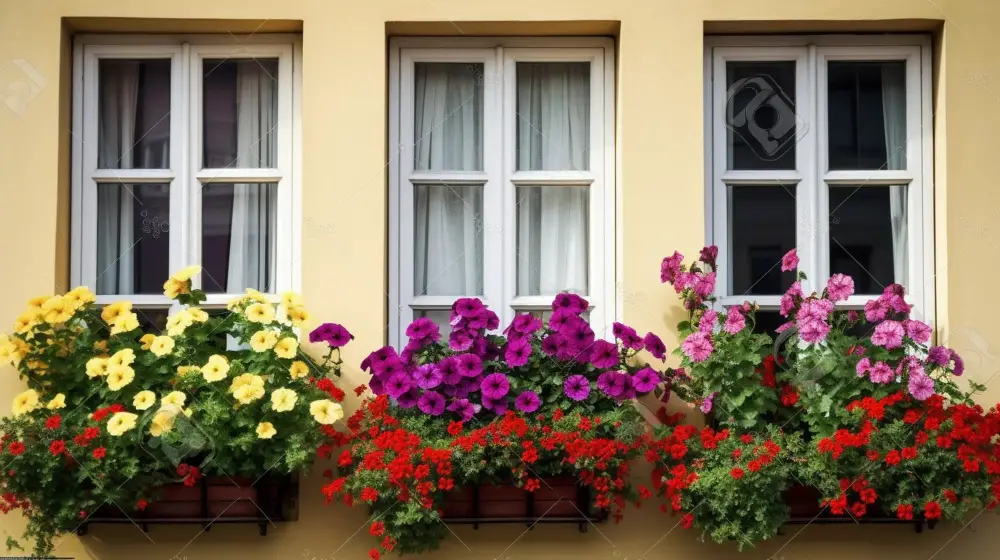
These simple containers can be filled with flowers or herbs and placed on the outside of your windowsill, adding color and fragrance to any room. Window boxes come in various sizes and materials such as wood, metal or plastic so that you can choose one that fits your style.
Not only do they look great from inside the house but also from outside. They create a beautiful view for anyone passing by while giving privacy at the same time.
You can plant seasonal flowers like petunias in summer or pansies during winter months; alternatively, grow herbs like basil which will not only provide fresh ingredients for cooking but also give off a lovely aroma throughout the day.
Window Shelves
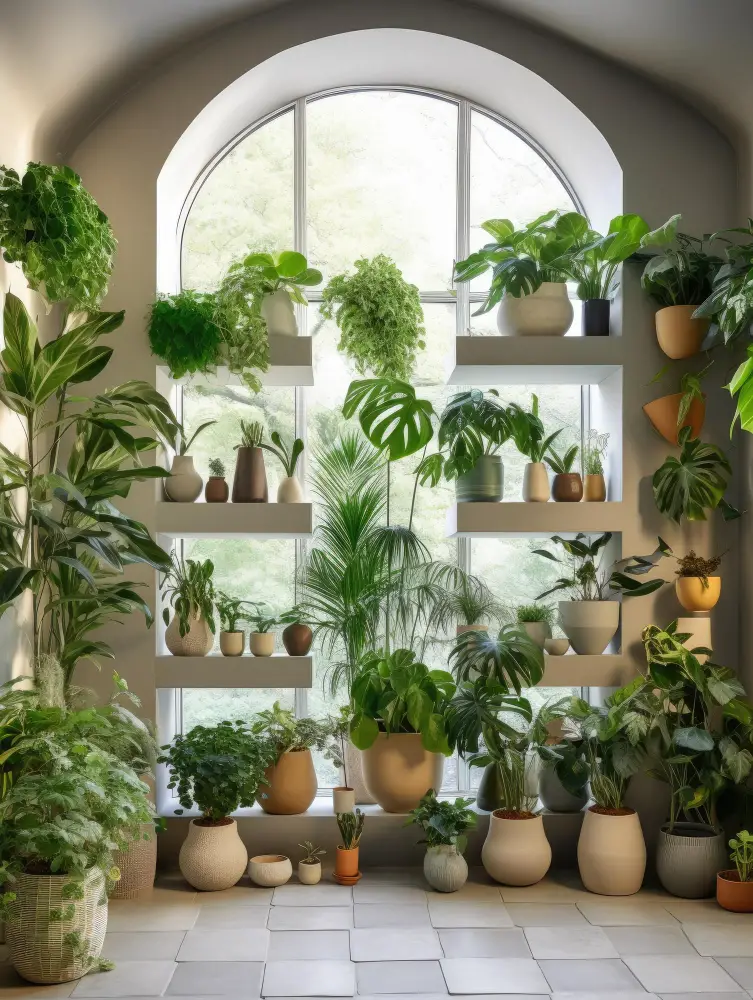
These shelves can be installed directly onto the window frame or hung from the wall above the window, depending on your preference. They come in a variety of styles and materials, including wood, metal, and glass.
One popular option is to use floating wooden shelves that match other furniture pieces in the room for a cohesive look. You can place potted plants or small decorative items on these shelves to create an eye-catching display that draws attention away from any lack of curtains.
Another idea is to install glass shelving units with built-in lighting underneath them for added ambiance at night time. This creates an elegant look while still allowing natural light into the room during daytime hours.
Hanging Plants
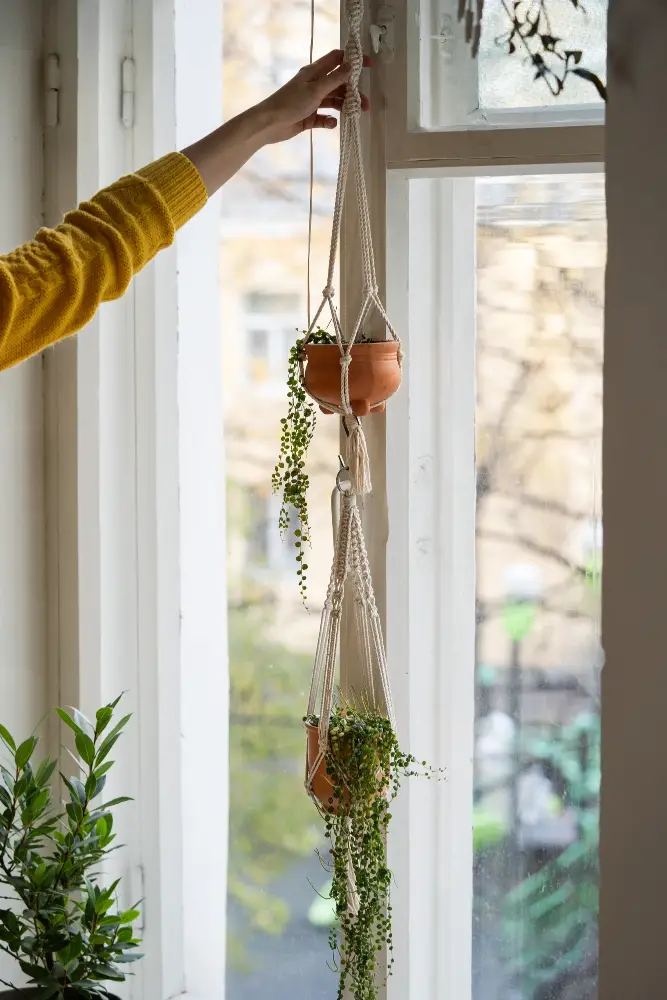
Hanging plants are an excellent option for those who want to dress up their windows without curtains. They not only look beautiful but also help purify the air in your home.
There is no shortage of options when it comes to hanging plants, from trailing ivy and spider plants to colorful flowers like petunias or pansies. You can choose one large plant or several smaller ones arranged in a cluster for added impact.
To hang your plants, you’ll need some sturdy hooks that can support the weight of the pot and soil. Be sure not to place them too close together so that each plant has enough space for growth.
Herb Garden
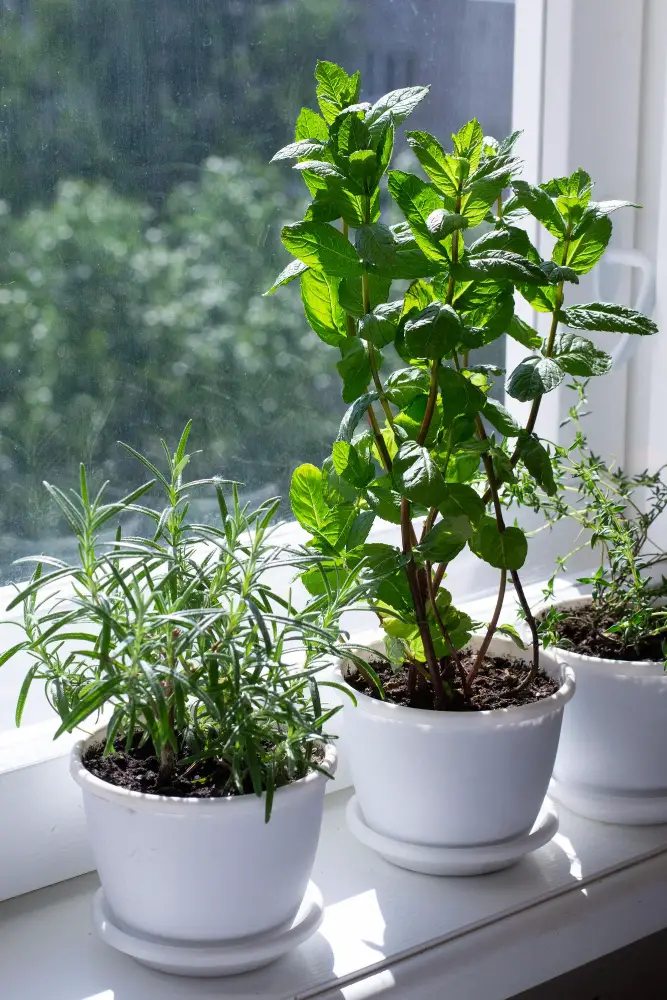
All you need is a few small pots or containers, potting soil, and the herbs of your choice.
Some popular options for indoor herb gardens include basil, thyme, parsley, rosemary and mint. These plants are easy to grow indoors as long as they receive plenty of sunlight (at least 6 hours per day) and are watered regularly.
To get started with creating an indoor herb garden on your windowsill:
- Choose the right location: Select a sunny spot near the window where there’s enough light.
- Pick suitable containers: Use small pots or containers that have drainage holes at their bottom.
- Add soil: Fill each container about two-thirds full with good quality potting mix.
- Plant Herbs: Place one plant per container; make sure they have enough space between them so they don’t compete for nutrients
- Water Regularly: Water when needed but avoid overwatering
Hanging Garden
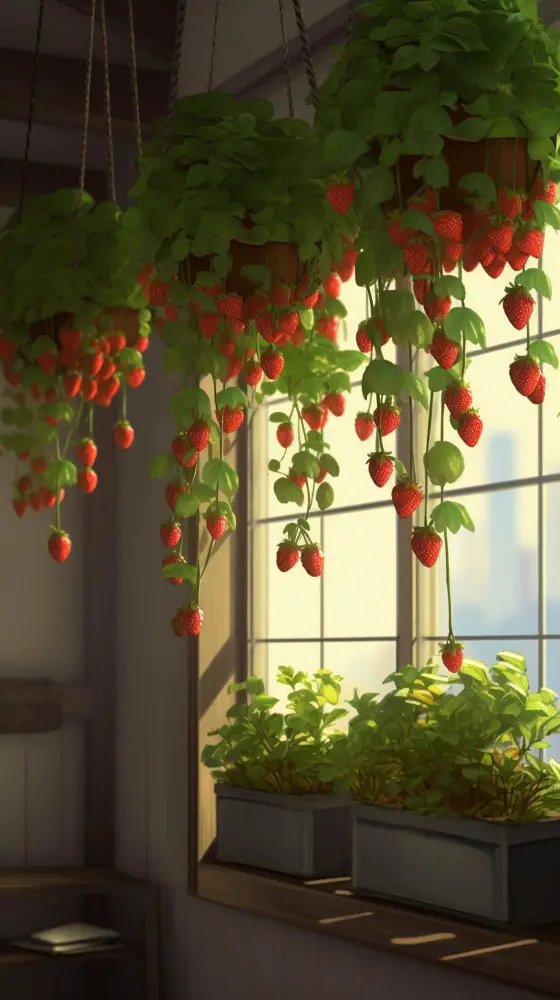
This is an excellent option if you have limited space or want to keep your plants out of reach of pets or children. Hanging gardens can be made using various materials such as macrame plant hangers, wire baskets, and wooden boxes.
To create a hanging garden in your window, start by selecting the right plants that thrive indoors with minimal sunlight exposure. Some great options include spider plants, pothos vines and English ivy.
Next up is choosing the perfect container for each plant; this will depend on their size and shape but also on what fits best with the overall decor style of your room.
Once you’ve selected both containers and plants it’s time to hang them! You can use ceiling hooks or tension rods depending on how much weight they need support from above – just make sure everything is secure before adding soil & water!.
Valances
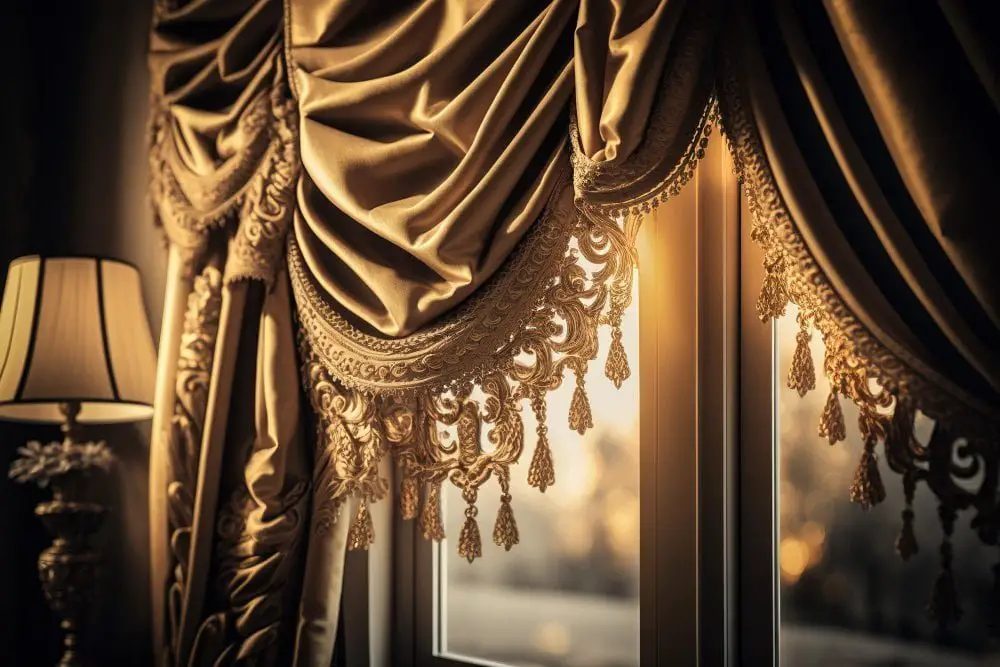
These decorative pieces of fabric or wood hang across the top of your window frame, adding a touch of elegance and sophistication to any room. They come in various styles, from simple straight valances to more elaborate designs with ruffles or pleats.
One popular DIY option is creating a rolled valance using fabric that complements your decor. This type of valance is easy to make and can be customized according to your preferences by choosing different fabrics, colors, patterns, and textures.
Another option is purchasing pre-made valances that match the theme or color scheme you have chosen for your room. You can find them in many home decor stores as well as online retailers such as Amazon.
DIY Rolled Valance
If you’re looking for an easy DIY project, consider making a rolled valance. This simple yet elegant window treatment can be made with just a few basic materials and doesn’t require any sewing skills.
To make your own rolled valance, start by measuring the width of your window frame and adding 2-3 inches on either side. Cut a piece of fabric to this size, then fold over each edge by about half an inch and iron it flat.
Next, cut two strips of ribbon or twill tape that are slightly longer than the width of your fabric panel. Sew one strip onto each end of the panel so that they hang down like ties.
Roll up the top edge of the fabric tightly around a wooden dowel or curtain rod until it’s at your desired height. Tie each ribbon around either end of the dowel to secure it in place.
Sliding Panels
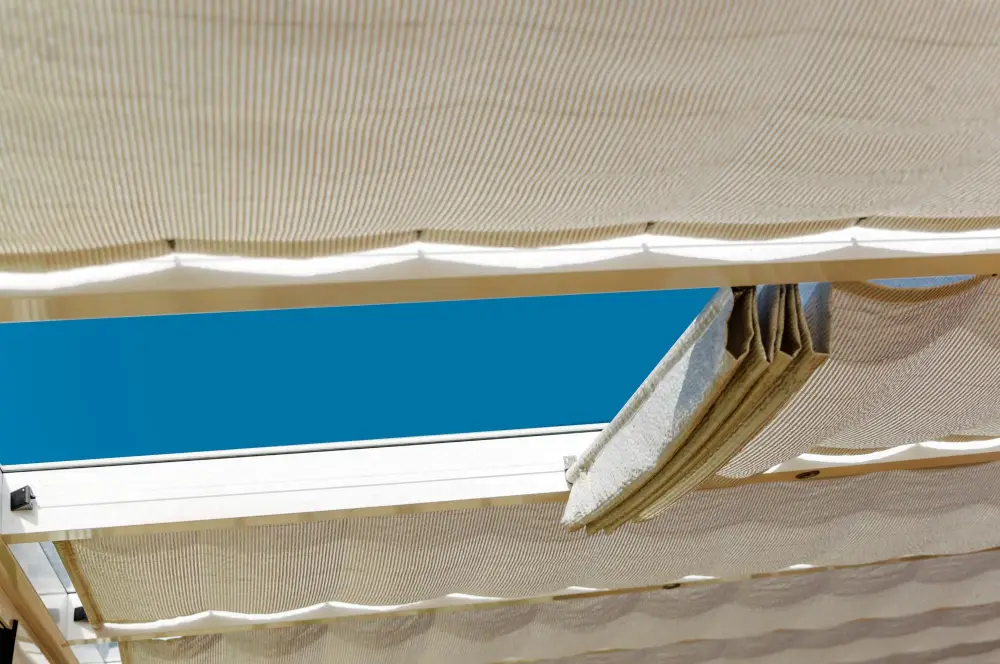
These panels are made of fabric or woven wood and slide along a track, making them easy to open and close as needed. They come in various colors, patterns, textures that can complement any decor style.
One of the benefits of sliding panels is their versatility; they can be used on large windows or even as room dividers. You can choose from different materials such as bamboo shades for an earthy feel or sheer fabrics for a light filtering effect.
Another advantage is that they offer privacy while still allowing natural light into space. Sliding panels also provide insulation against heat loss during winter months while keeping out excess sunlight during summer months.
Shoji Panels
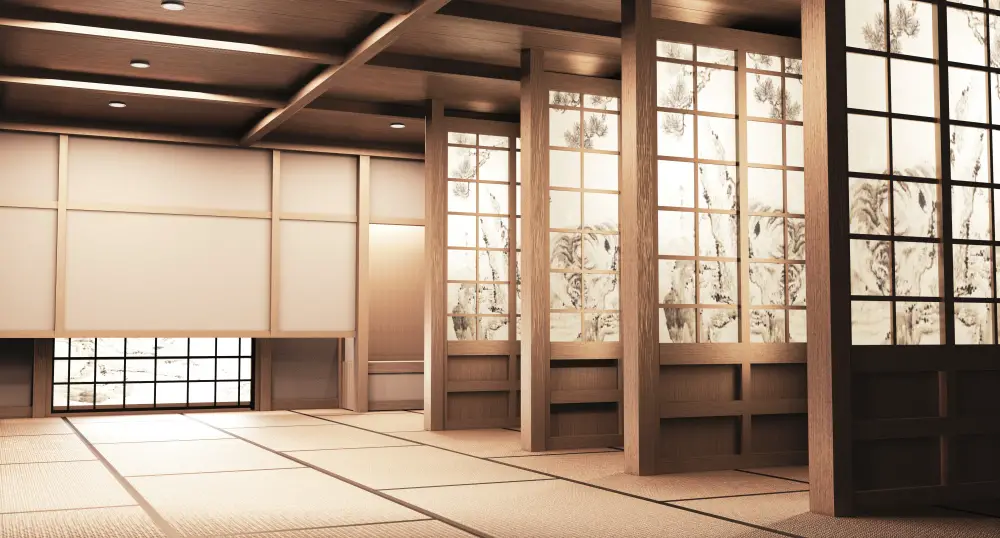
These Japanese-style screens consist of wooden frames with translucent paper or fabric stretched across them. They offer privacy while still allowing natural light to filter through, creating a warm and inviting atmosphere in any room.
Shoji panels come in various sizes and designs, making it easy to find the perfect fit for your window. You can choose from traditional white rice paper or opt for something more colorful or patterned if you prefer.
One of the best things about Shoji panels is that they are incredibly versatile. They work well as standalone window treatments but can also be used as room dividers or sliding doors between rooms.
Decorative Screens
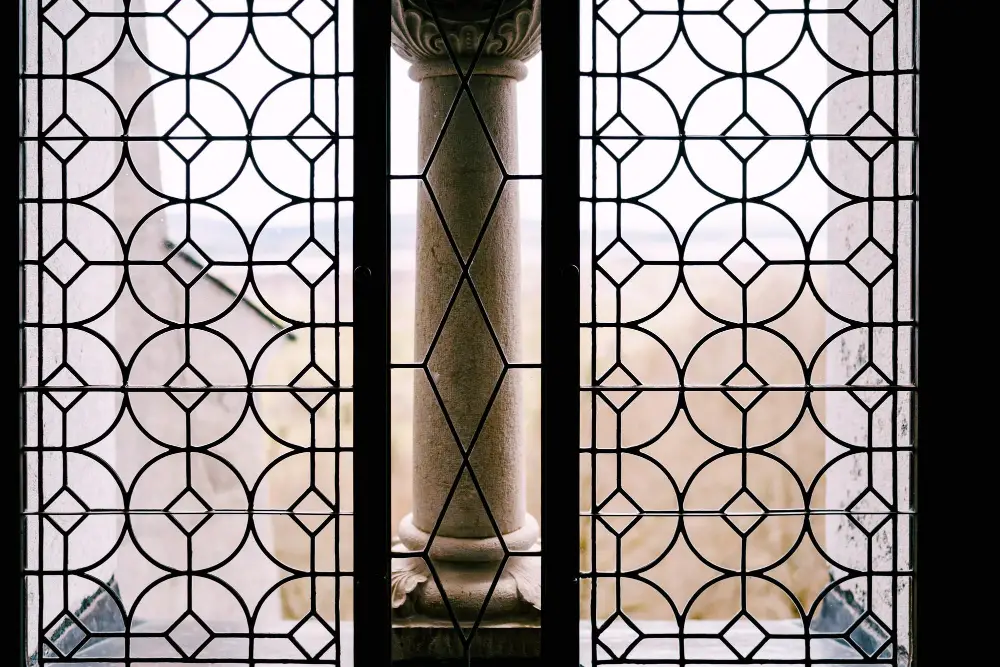
These versatile pieces come in a variety of styles and materials, from intricately carved wood panels to sleek metal designs. They can be used as standalone window coverings or layered over other treatments like blinds or shades for added texture and interest.
One popular type of decorative screen is the shoji panel, which originated in Japan but has since become popular around the world. These screens are typically made from thin wooden frames with rice paper inserts that filter light while still providing privacy.
Another option is a laser-cut metal screen, which can create stunning patterns on your walls when sunlight filters through them. You could also opt for something more rustic like barn door shutters or vintage-style shutters that add charm and character to any room.
Privacy Screen
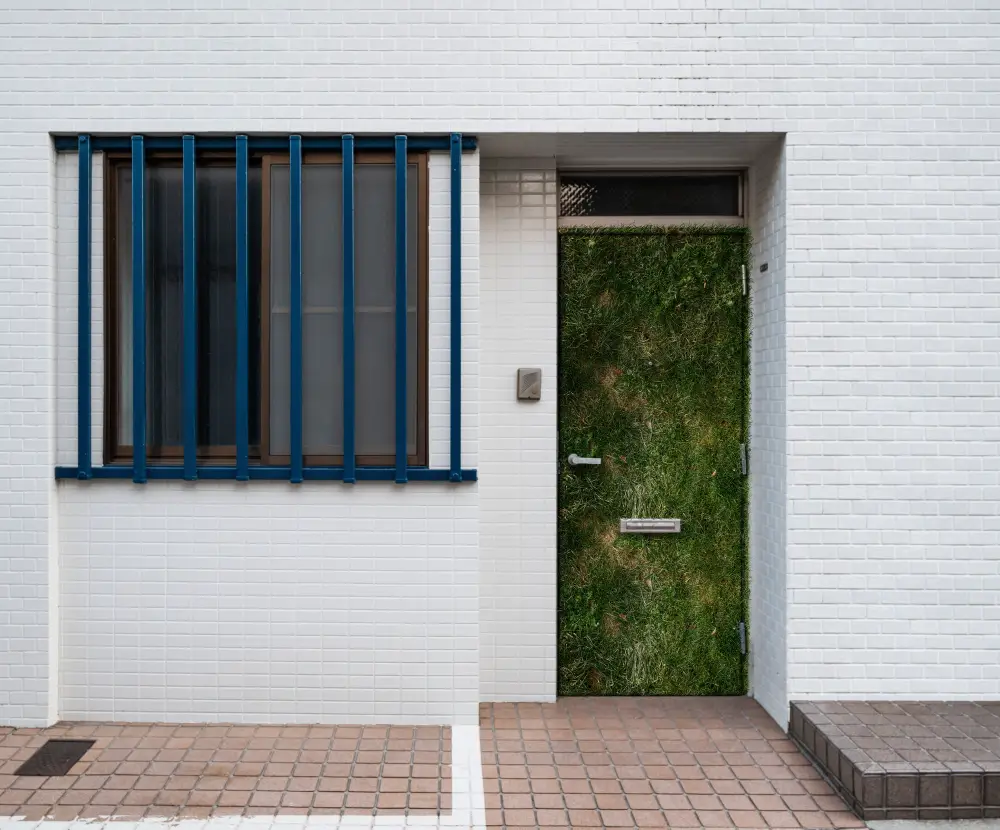
These screens are available in various materials such as wood, metal or fabric and can be customized according to the size of your window. They come in different designs and patterns that will complement any decor style.
A popular option is the decorative laser-cut metal screens that offer both functionality and aesthetics. You can choose from intricate geometric patterns or nature-inspired designs like leaves or flowers.
The best part about these screens is they allow sunlight into the room while still providing enough coverage for privacy.
Another great option is using frosted glass film on your windows which gives them an opaque appearance but still allows light through it making it perfect for bathrooms, bedrooms, living rooms where you need more seclusion.
Lace Window Screens
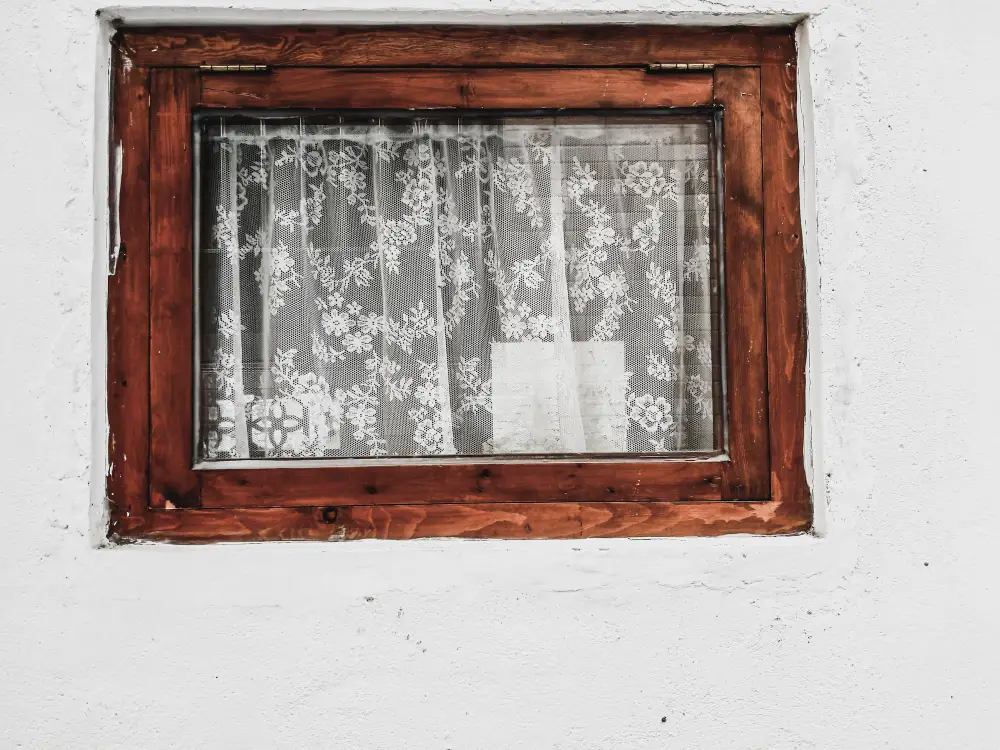
These screens come in various patterns and designs that can add a vintage or bohemian vibe to any room. They also provide privacy while still allowing natural light into the space.
To create your own lace window screen, all you need is some lace fabric, scissors, and double-sided tape. Measure the dimensions of your window frame before cutting the fabric to size.
Then use double-sided tape around the edges of the frame to attach it securely.
Alternatively, if you don’t want to make one yourself or prefer something more durable than just using tape as adhesive material – there are plenty of ready-made options available online or at home decor stores that offer different styles and sizes suitable for any type of interior design style.
Macrame
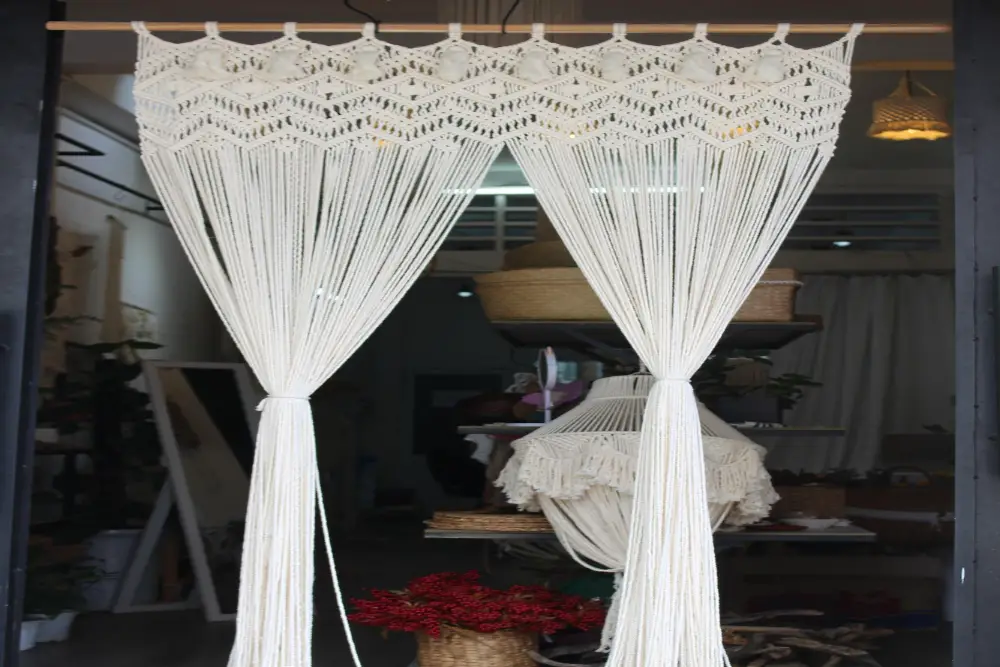
Macrame involves knotting cords or strings together in intricate patterns to form decorative designs. You can use macrame to make anything from simple plant hangers to elaborate wall hangings, and it’s an excellent way of adding texture and interest to your windows.
One popular way of using macrame for window dressing is by creating a display that hangs down from the top of the window frame. This could be as simple as a single strand with some beads or feathers attached, or you could create something more complex like a cascading curtain made up of multiple strands.
Another option is creating macramé curtains which are perfect for adding privacy while still allowing light into your room. These curtains come in various styles such as bohemian-inspired tassel fringe, geometric shapes, knotted loops among others.
Macrame Display
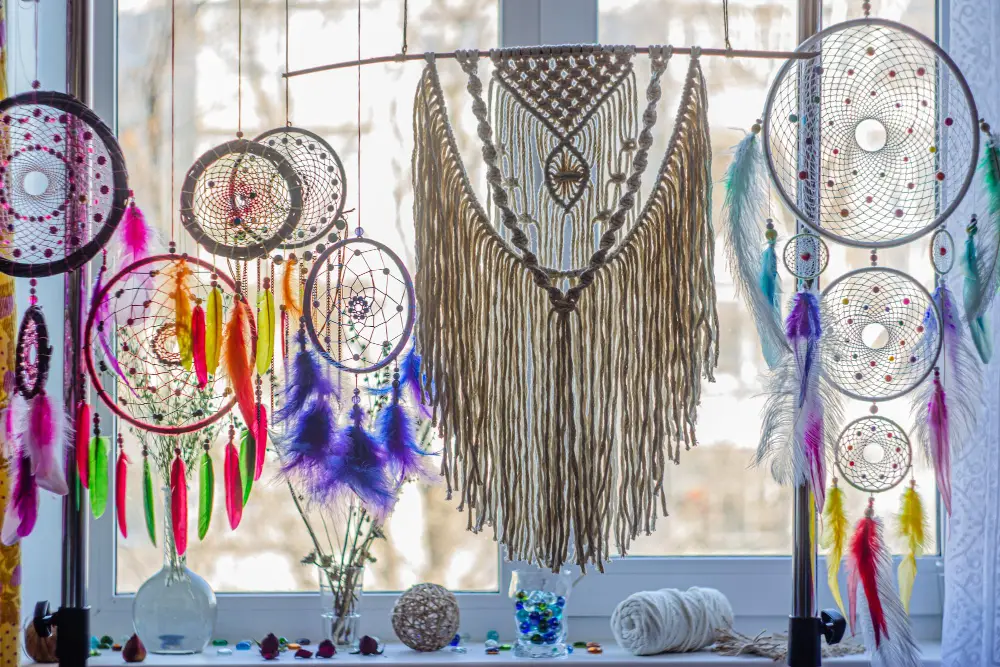
Macrame is an art form that involves knotting cords or strings together in intricate patterns to create beautiful designs. You can use macrame to make anything from plant hangers and wall hangings to curtains and window displays.
To create a macrame display for your window, start by choosing the type of cord or string you want to use. Then, decide on the pattern you want to follow – there are plenty of tutorials available online if you need some inspiration! Once you’ve created your design, simply hang it in front of your window using hooks or suction cups.
Not only will a macrame display add visual interest and texture to any room, but it also provides privacy while still allowing natural light into space.
Framed Art
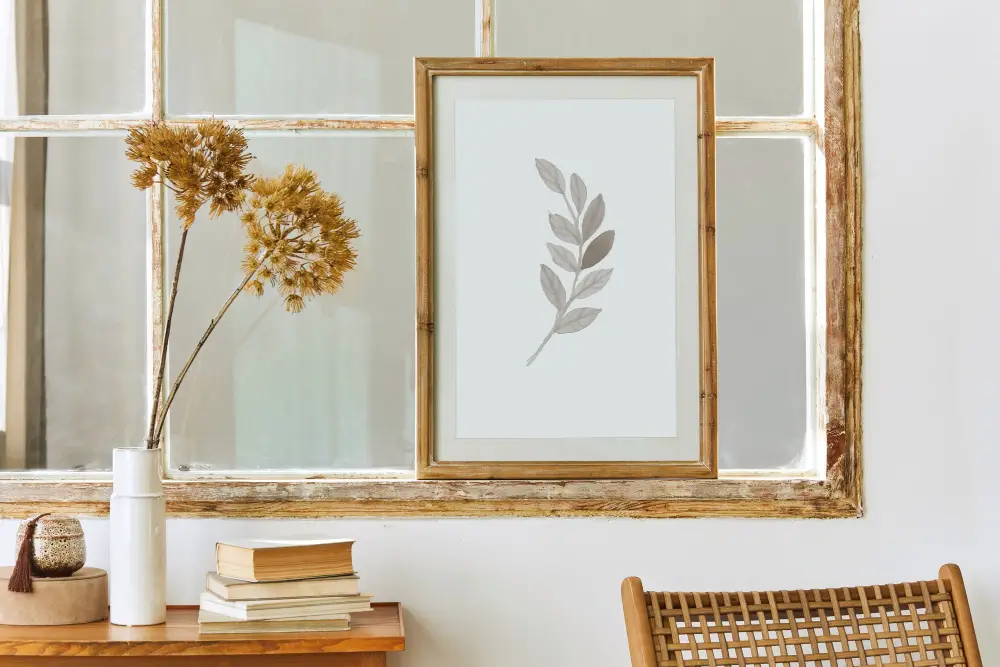
This is an excellent option if you have a favorite piece of artwork that you want to showcase or if you’re looking for something unique and eye-catching. You can choose from various sizes, styles, and colors of frames that complement the decor in your room.
For instance, black frames are perfect for modern spaces while ornate gold or silver ones work well in traditional settings.
To hang framed art on your window without curtains, use suction cups with hooks attached at the top corners of each frame. Make sure they are strong enough to hold the weight of the frame securely but not too heavy as it may damage your window glass surface.
Stenciled Sign

This is an excellent option if you have a favorite quote or phrase that you want to display in your home. You can use stencils and paint to create the design directly on the windowpane, or use vinyl lettering for an easier application process.
To get started with this project, first choose the quote or phrase that speaks to you. Next, select a font style that complements your decor theme and print out the letters onto cardstock paper.
Cut out each letter using scissors or craft knife carefully.
Once all of your letters are cut out from cardstock paper, place them onto contact paper (sticky side up) so they stick together as one piece like stencil sheet then cut around it again leaving some margin space around each letter.
Now position this stencil sheet over glass pane where desired text should appear; secure edges with masking tape so it doesn’t move while painting inside spaces between letters using acrylic paint color of choice.
Paint Window Frame Color
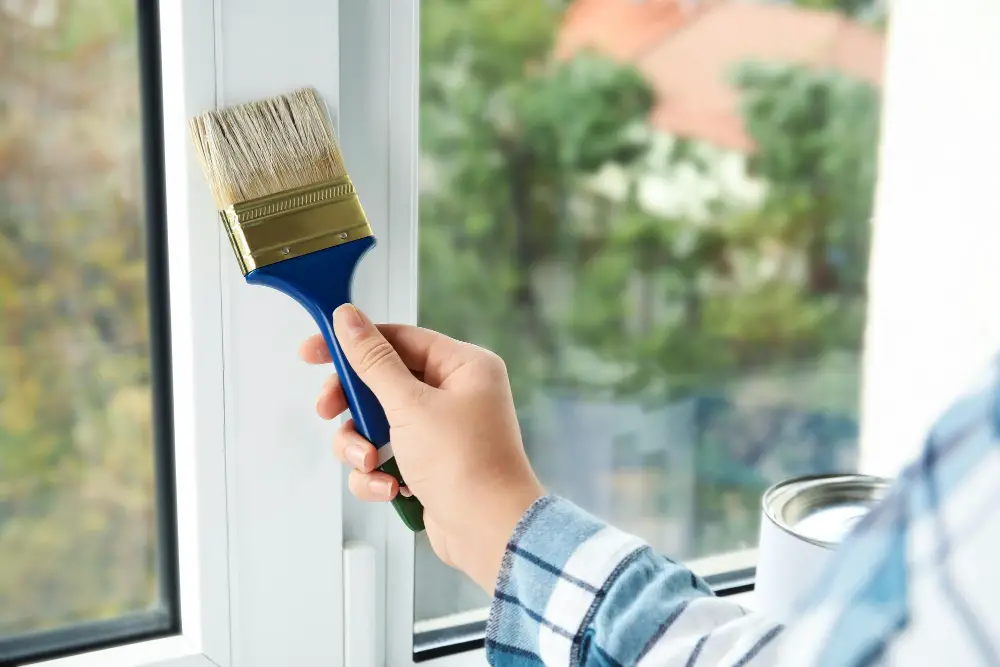
It’s also a great option if you’re looking for something budget-friendly and easy to do yourself. You can choose any color that complements your room decor, or go bold with bright hues like red, blue, or green.
Before painting the window frame, make sure it’s clean and dry. Remove any dirt or debris using soap water solution then let it dry completely before applying paint.
When choosing paint for your window frames consider using high-quality enamel paints as they are durable enough to withstand wear-and-tear from opening/closing windows frequently.
Once you’ve chosen the right paint type and color scheme for your space, apply two coats of paint on each side of the frame allowing sufficient drying time between coats. This will ensure that you get even coverage without drips or streaks.
Twinkling String Lights

These lights come in various colors and styles, from classic white bulbs to colorful LED strands. You can hang them around the window frame or drape them across the top of the window for a cozy effect.
Twinkling string lights are perfect for creating an intimate atmosphere in any room, especially during holidays or special occasions.
One creative idea is to use fairy light curtains that create an illusion of falling stars when hung behind sheer curtains on your windows. This will give off a magical vibe that’s sure to impress anyone who enters your space.
Another option is using battery-operated twinkle light strands with remote control features so you can easily turn them on/off without having cords hanging down from outlets near your windows.
Creative DIY Alternatives
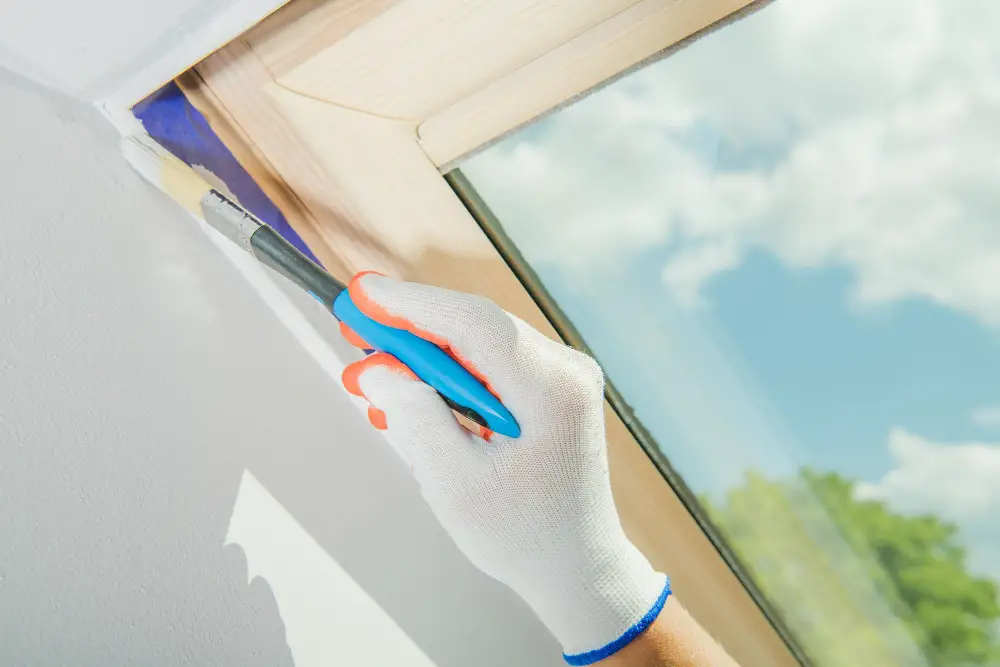
For example, you could create a macrame display using rope or yarn and hang it in front of your window for a bohemian vibe. Another option is to make your own valance using fabric and ribbon or even repurpose an old scarf as a makeshift curtain.
For those who love plants, consider creating hanging gardens with small pots suspended from the ceiling near the window. You could also install shelves on either side of the window frame and fill them with potted herbs or succulents.
If you want something more unique, try painting your window frames in bold colors that complement the rest of your decor. Or use stencils to create patterns on plain glass panes for added interest.
Don’t forget about lighting! Twinkling string lights can be draped around windowsills or hung from hooks above the frame for an enchanting effect at night.
FAQ
How can I decorate my window without curtains or blinds?
To decorate your window without curtains or blinds, consider applying stick-on texture sheets or designs, using a privacy screen or external shutters, or incorporating hanging plants and foliage on the windowsill.
Can you leave windows without curtains?
Yes, you can leave windows without curtains, particularly when there are appropriate reasons for it, as some designers believe that window treatments can be an optional finishing touch for a well-designed room.
What can I use instead of curtains for privacy?
Alternative: You can use traditional blinds as a popular and inexpensive alternative to curtains, providing privacy and control over the amount of light entering a room.
What are some creative window treatment alternatives for a stylish yet functional look?
Some creative window treatment alternatives include using decorative screens, stained glass, frosted vinyl, layered curtains, and roman shades for a stylish and functional look.
How can I use plants or other natural elements to enhance window privacy and aesthetics?
To enhance window privacy and aesthetics using natural elements, incorporate plants or greenery like bamboo, tall grasses, or climbing vines to create visually pleasing privacy barriers.
Are there any DIY window covering ideas for those looking to add a personal touch to their home décor?
Some DIY window covering ideas include using fabric, re-purposing old materials, or creating unique designs with paint, providing a personal touch to home décor.
Recap
